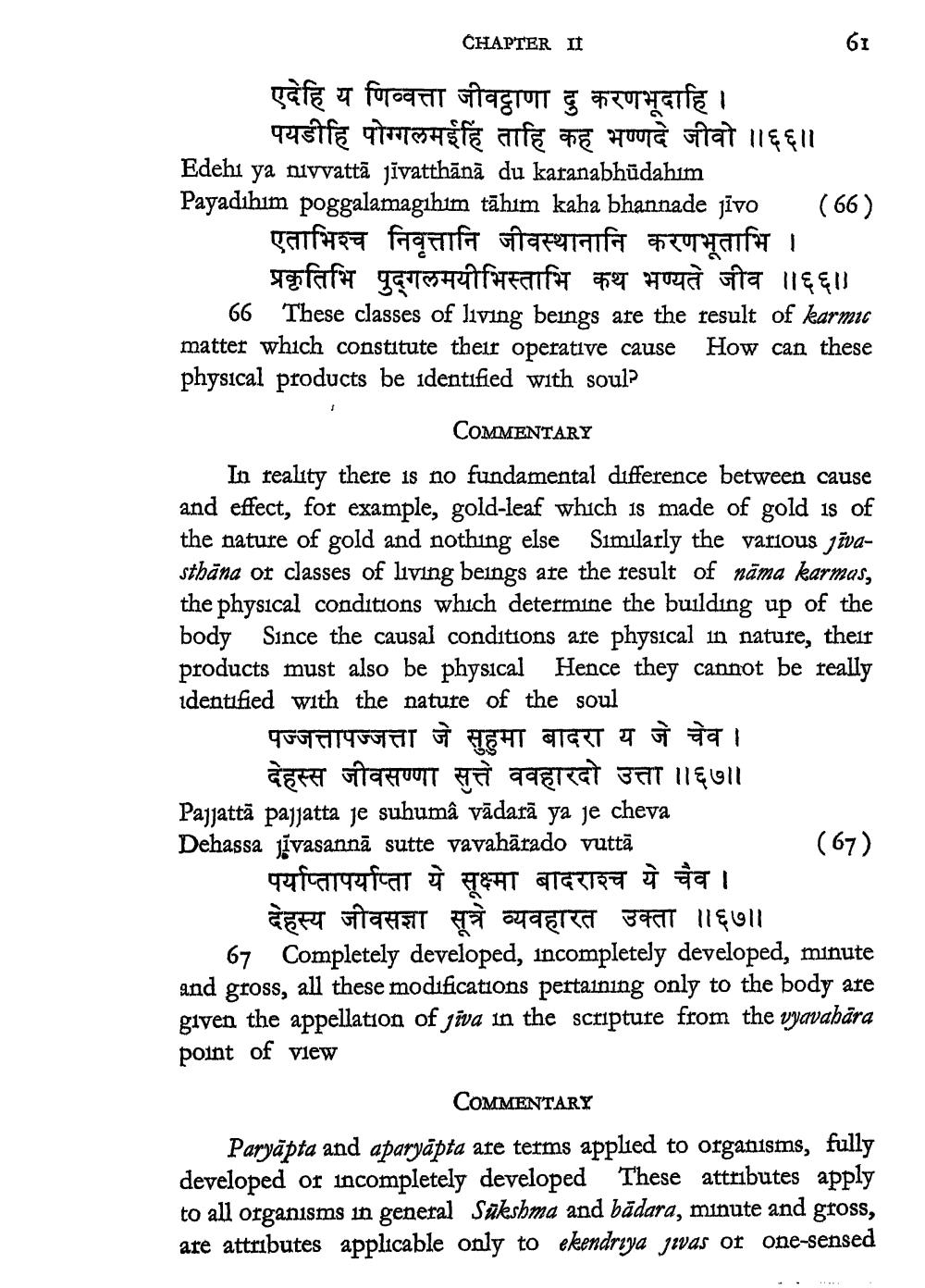________________
CHAPTER IT
एदेहि य णिव्वत्ता जीवट्ठाणा दु करणभूदाहि ।
पयडीहि पोग्गलमईहिं ताहि कह भण्णदे जीवो ॥६६॥ Edeh1 ya niyvattā jīvatthānā du karanabhūdahim Payadihim poggalamagihim tāhim kaha bhannade jivo (66)
एताभिश्च निवृत्तानि जीवस्थानानि करणभूताभि ।
प्रकृतिभि पुद्गलमयीभिस्ताभि कथ भण्यते जीव ॥६६॥ 66 These classes of living beings are the result of karmic matter which constitute their operative cause How can these physical products be identified with soul?
COMMENTARY In reality there is no fundamental difference between cause and effect, for example, gold-leaf which is made of gold is of the nature of gold and nothing else Similarly the various Jivasthāna or classes of living beings are the result of nāma karmas, the physical conditions which determine the building up of the body Since the causal conditions are physical in nature, their products must also be physical Hence they cannot be really identified with the nature of the soul
पज्जत्तापज्जत्ता जे सुहुमा बादरा य जे चेव ।
देहस्स जीवसण्णा सुत्ते ववहारदो उत्ता ॥६७॥ Pajjattā pajjatta je suhumâ vādarā ya je cheva Dehassa jīvasannā sutte vavahārado vuttā
(67) पर्याप्तापर्याप्ता ये सूक्ष्मा बादराश्च ये चैव ।
देहस्य जीवसज्ञा सूत्रे व्यवहारत उक्ता ॥६७॥ 67 Completely developed, incompletely developed, minute and gross, all these modifications pertaining only to the body are given the appellation of jiva in the scripture from the vyavahāra point of view
COMMENTARY Paryāpta and aparyāpta are terms applied to organisms, fully developed or incompletely developed These attributes apply to all organisms in general Sakshma and bādara, minute and gross, are attributes applicable only to ekendriya jivas or one-sensed




